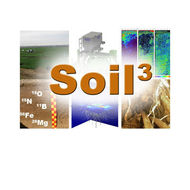Root and shoot growth of spring wheat (Triticum aestivum L.) are differently affected by increasing subsoil biopore density when grown under different subsoil moisture (2021.0)
Koch M., Boselli R., Hasler M., Zörb C., Athmann M., Kautz T.
Biology and Fertility of Soils, 57 (8), 1155-1169
doi:10.1007/s00374-021-01597-7
Abstract
AbstractA column experiment with five different pore densities (0, 1, 2, 3, and 4 pores column−1) and two varying moisture regimes (comparatively dry and comparatively moist regime) in the subsoil part of the columns was established. In each pore, Lumbricus terrestris was introduced for 28 days before sowing wheat plants. After 40 days of plant growth, watering was stopped to induce progressive topsoil drying. Parameters describing the shoot hydration, mineral uptake, and aboveground biomass were quantified. Root biomass and root length densities (RLD) were measured separately for six soil layers. Under dry subsoil conditions, plants grown under increasing biopore density showed an increase of the RLD and an improved shoot hydration but the aboveground biomass was unaffected. Since RLD but not root biomass was enhanced, it is assumed that roots were able to explore a larger volume of soil with the same amount of root biomass. Thereby, subsoil water likely was used more efficiently leading to an improved hydration. Under moist subsoil conditions, plants grown with increasing biopore density revealed enhanced shoot biomasses and nutrient uptake while the belowground biomass was unaffected. The improved nutrient uptake can be ascribed to, first, the higher subsoil water availability favoring mass flow driven nutrient uptake, and second, to direct and indirect effects of earthworms on the availability of soil nutrients. It is concluded that high biopore abundancies have the potential to improve not only the belowground but also the aboveground biomass. This, however, largely depends on subsoil moisture.